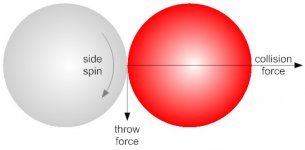I agree with this in principle, but on such a thin hit there's virtually no spin-throw and therefor no change in where you can hit the OB.
pj
chgo
I'm not sure I agree with this. Granted, I could be seeing a masse effect but it sure looks like throw.
